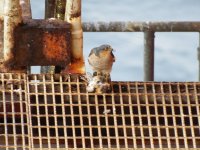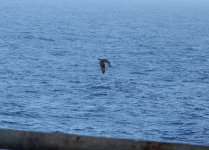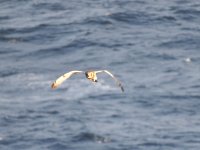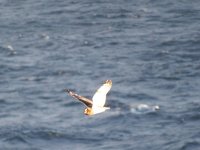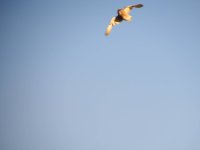I think I should try and summarise this week's owl activity, especially as it now seems to be over.
On Monday, I spotted our first owl. Initially, I put it down as a Short-eared. That owl disappeared out into the mist, and looked like it had departed the platform. This is guesswork, but I think that owl returned, and was the owl I saw and photographed the next day, as shown on post #886, although it is possible that it was the S-E Owl that became very evident a couple of days later, or indeed was an owl that moved on to be replaced by another.
I was unsure about the ID of the owl photographed in #886, so I put the photo up on the ID pages of these fora. Initially, S-E Owl was suggested, but eventually, Long-eared Owl seemed to be the favoured ID. Having now done a crash course on eared owl ID, I agree with L-E Owl, based not only on that photo, but also on what I saw.
A Short-eared owl was seen yesterday, but the owl pictured this afternoon seems dark, and has orangey patches on its wing that possibly suggest Long-eared? Location is approx 120 miles SE of Lerwick. Both species seen here before, but S-E O would be the default. Only one distant photo.

www.birdforum.net
On Wednesday, I unknowingly, at the time, photographed not one, but two owls. Photographs showed a S-E Owl and a L-E Owl.
Also on Wednesday, I saw a S-E Owl in the afternoon, however, one of the other guys who walked around onto the east side late in the day, had an owl that flew at him out of cover, just passing over the top of his head, then a few yards further on, he found a S-E Owl perched on the walkway. I have to assume that the first owl he saw was the L-E Owl, but anything is possible.
Thursday was very windy, but in the morning, an owl was seen heading away from the platform. And that was the last record I had this week. The wind has dropped off today, but there is no sign of any kind of migrant on the move, and I feel that the owls have moved on, hopefully all the way to Scotland.
It has been a fantastic experience that will live long in my memory, and really shows the potential of offshore platform birding. I would also like to take the time to thank all those who keep an eye on this thread, giving me a nudge in the right direction from time to time. All questions and comments are much appreciated, and I often find they are the driver to my learning more.





